Possible Falsifications And Forgery Involved In Nyamodi Case: Documents May Implicate Franklin County Clerk’s Office In Youth Frame Up Human Rights Case
Posted by David Adams on January 5th, 2014
As the disturbing case of Shannon Nyamodi begins to garner national attention, for many around the country and within the Franklin County community where the shooting incident occurred, the story is a hard sell for most to come to grips with the youth’s possible innocence related to the crime. A story where a woman’s own daughter hired a young black man to kill and rob her is simply a gut wrenching, callous, and such a cowardice act of betrayal that no parent should ever have to endure. The epidemic of violent crimes around the nation constantly played out through media coverage of stories like this, has a tranquilizing effect on an American public frustrated with the seemingly endless violent culture on the streets of our country.
Despite shocking news coverage highlighting heinous crimes of this nature, there have been crimes broadcast on national media that didn’t quite pan out the way media outlets and their producers had anticipated the stories to develop. The story of Shannon Nyamodi’s involvement in this crime perhaps may be a textbook example of a crime in the news which had the bottom fall right out of it as more details related to the case became public. When news stories of violent crimes spark the public’s interest, especially within the confines of small, close knit, and prideful towns like Youngsville, North Carolina where it’s citizens express complete outrage regarding such despicable behavior, news stories related to such crime are initially often times accepted as being credible.
The rarity of criminal behavior within rural southern American towns may be the cause for less scrutiny of media reports in comparison to news reports in big city America, but these towns shouldn’t be immune from the implementation of objectivity and fairness regarding cases like this. Crime is so prevalent in more urbanized settings around the country and in many of these cities, a watchful public is typically more suspicious by nature of an allege criminal’s guilt, and usually reserves judgement on a case, and not allowing the media to cause it to resolve on convicting a subject prior to a trial playing out in a court of law. Also, in places like North Carolina where some say towns are given a bad rap, labeling communities as being racist when crimes involving African Americans appear to be handled unfairly in the state’s penal system, and the stigmatization of it’s historical allegiance to the confederacy dating back to the Civil War may be the reason outraged has developed over the state’s handling of this case.
As I have recently discovered while interacting with citizens from Franklin County North Carolina in the Franklin County News Online Group on Facebook, there appears to be a large contingency of people who are convinced of Shannon Nymodi’s guilt related to criminal charges accusing him of shooting Rhonda MacClean in the face one fall night back in August of 2012. I’m not sure if many of those who I interacted with were friends, family, or acquaintances of the victim in this case, but their stringent opposition to the mere thought of Shannon’s innocence clearly spurned agitation from many within the social media thread. Many recited news reports from print and televised coverage of the case as their premise for determining the young man’s guilt, but what do they really know about this case? While I was accused of making racist statements and labeled a race baiter, clearly those comments came from perspectives unfamiliar with my reputation of being completely outspoken and one of the harshest critics of black on black violence within the African American community, and especially woman of color (the TPC Blog has a plethora of coverage related to these topics).
In the Shannon Nyamodi case I have presented documentation supporting my arguments pointing to what I believe was a conspiracy to convict an innocent man, but when people from Franklin County go on the defensive regarding a story like this without presenting facts to support their position, it creates serious concern that they are in fact coming from a prejudice poster, and fueling the suspicion of racism that many feel is indigenous to the culture of the state of North Carolina. I could sense while interacting in the FCNO social media thread that some prideful North Carolinians were disturbed by sweeping generalizations which label all white people in the community as racist. However, I believe the best way for these communities to combat such characterizations is to allow these kinds of cases to met themselves out in a Court of law while remaining objective and viewing all elements of the case with a common sense approach. Some of the Franklin County citizens inquired as to how I would feel if the shoe were on the other foot, and I’ll go on the record to say if Shannon Nyamodi did in fact shoot this woman and robbed her, then he belongs behind bars for a long time. I don’t believe that evidence exist to reach such a conclusion in this case, which I’ll outline further in this article.
The Frame Up
Fifteen months after she was shot in the face and robbed within her own home, Rhonda MacClean has come forward and publicly stated that Shannon Nyamodi was in fact the assailant who attacked her the night of August 6, 2012. It’s unclear after all this time, and without making statements to any media outlet since the crime occurred, why she has chosen a social media platform to vent her perspective on the case. More importantly, it should be noted that her recent statements contradict what police officials who were primary to the shooting scene that night, have documented in their reports related to the case. MacClean described to TPC in horrific detail the events of the night she was shot in the face, but her story doesn’t match what she told Franklin County Sheriff Deputy Barrett, nor Youngsville police Lt. M. Little. In fact statements she allegedly made to both officers contrasted, and it’s surprising that no mention was ever made of it from either police agency. In short MacClean told deputy Barrett that some unknown subject hit her in the head as she left her bedroom to check on her residence. MacClean told Lt. Little that she “heard the front door to her home open and went downstairs to see who and when she got downstairs she saw a man and she asked her daughter what was she doing and someone hit her in the head with the pole from behind her sliding door.”
Regardless of what anyone says about the case, these are the facts as reported by police officers who were at the scene that night. She describes being hit in the head and never mentioned anything about being shot by anyone (although police say they don’t believe MacClean realized that she had actually been shot,and probably mistakenly thought that she was struck with a pole). The odd part is that she described being hit in the head upstairs to Barrett and then downstairs to Lt. Little. Why isn’t it clear to her where she was attacked? Why wasn’t it clear to her that she had been shot? At some point she would have had to have remembered hearing the gun blast. I am wondering if the Complainant who filed for the arrest warrant for Shannon Nyamodi is aware of these contrasting statements that MacClean gave to police officers from different agencies? Take a look at snap shots from the reports and the contrasting statements below:
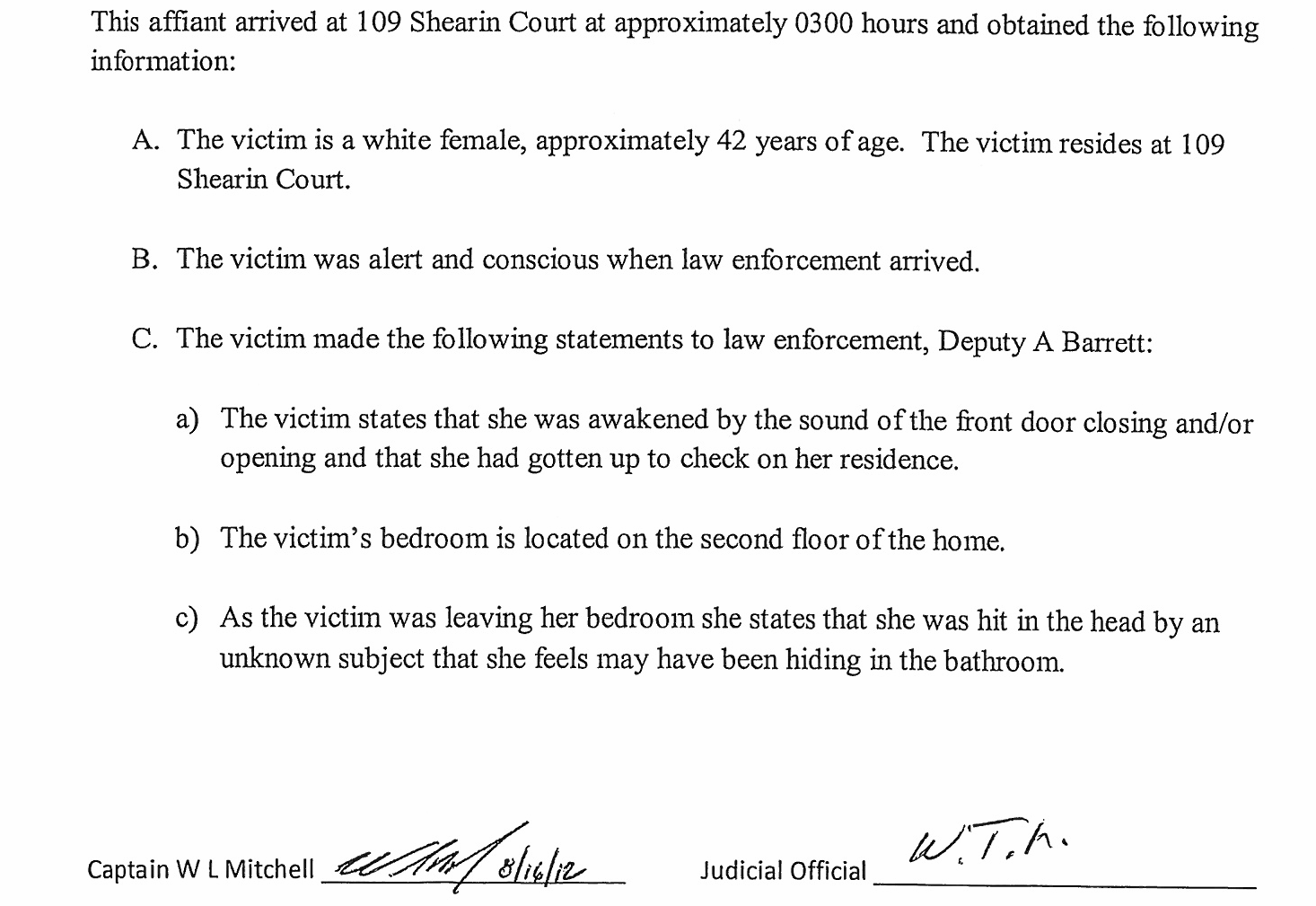
Snapshot from Deputy Barrett’s reports showing MacClean’s statement.

Snapshot from Lt. M. Little’s report highlighting MacClean’s statement.
Barrett’s Report PDF (Second Search Warrant Application at bottom of page 2)
Lt. M. Little Report PDF (Second report)
Now that we have established as a matter of fact that MacClean more than likely didn’t identify Shannon as the person who shot her that night,while communicating to police based on their initial reports that the assailant was some unknown person, and her statements to TPC describing having told police “there he is right there” becomes highly suspicious. For followers of this case to believe her now would mean that officers from the Franklin County Sheriff Department and the Youngsville Police were all incompetent, didn’t get it right, and failed to include such crucial information into police reports and properly comprehend that she had fingered the perpetrator at the scene. It’s apparent that Nyamodi wasn’t identified as the shooter because he wasn’t immediately taken into custody, and an arrest warrant being obtain for him later on. Shannon was questioned at the scene and initially let go.
More disturbingly, when we digest all variations of MacClean’s account of that night (detailed in previous TPC articles) it’s revealed that she is actually saying there were three men invading the home at the time of the crime. The man who struck her in the head upstairs when she came out of her bedroom, the man who struck her in the head from behind the sliding door when she got downstairs (or Allegedly Shannon Nyamodi who the allege victim told TPC suddenly emerged from a bathroom, and shot her in the face “at point blank range”), and the man (allegedly Mike Young) who she says accosted her 13 year old handicapped daughter with a screwdriver while all of these events played out in the home. Quite Frankly, the math isn’t hard to do here. A thorough investigator would have obtained all available data submitted in the case, including reports from personnel from other agencies who conducted field interviews with the victim and possible witnesses. This would have allowed lead investigators a complete look at how the crime possibly occurred.
It’s simply unimaginable that investigators would have accomplished this, had time to thoroughly examine data, and do so prior to obtaining an arrest warrant for Shannon Nyamodi by 3:10 p.m. which was the time of his arrest that day. Had investigators looked at all of the reports closely, they would have discovered the inconsistencies in the victims statements, and conducted a more thorough investigation to determine a clear picture of what she said occurred. The youth’s arrest within a twelve hour time frame when it was completely impossible to link him to the crime through any forensics evidence obtained from the crime scene such as DNA or fingerprints (Although the arrest, and search warrant for Nyamodi was obtained just hours after the crime, the warrant’s inclusion seeking DNA samples from the suspect couldn’t be obtained until he was actually in custody. How they linked him to any DNA before hand is confusing, and fingerprints potentially obtained from the crime scene couldn’t have linked him either, because he had never been printed before prior to his arrest for this crime.), continues to be problematic for authorities to establish compelling justification for charging Shannon in such a short time frame. To further compound these rather peculiar elements of this case, Deputy Barrett whose agency ultimately filed criminal charges against Shannon Nyamodi, indicated in his report that the “suspected shooter was no longer at the scene” upon police arrival, while he was securing the area of the crime.
We know this to be fact because Capt. William L. Mitchell, Barrett’s supervisor, included this information in his “Facts to Support Issuance of a Warrant” on the Franklin County’s Search Warrant application submitted before Superior Court Judge Hight. These statements in the officer’s report alone are the most compelling indication that MaClean never identified Shannon Nyamodi as her shooter to police officers who interviewed her that night. This crucial information as outlined in official police documents related to this crime would also establish as a matter of fact, that even the Franklin County Sheriff’s Commander was under the impression that the assailant who shot Rhonda MacClean in the face was unknown to police when authorities sought a warrant to search the home where the crime occured, to obtain potential trace evidence in the crime. View snapshots of Capt. Mitchell’s Search Warrant Application highlighting “Facts to Support Issuance of a Warrant” indicating that the ‘suspected shooter was no longer at the crime scene” below:
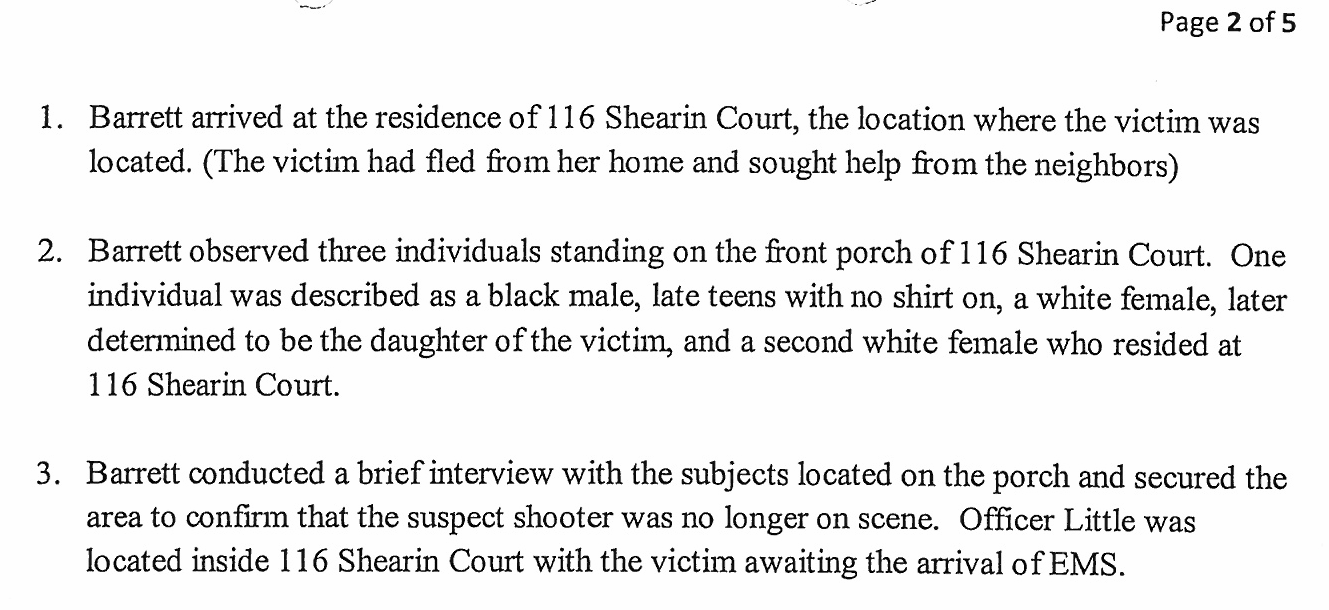
Snapshot of Capt. William L. Mitchell’s Search Warrant Application indicating police officials believed that the suspect shooter was unknown to police at the time the document was submitted to Superior Court.
Capt. Mitchell’s Search Warrant Application (Page 2, item #3, of second Warrant Application)
The above contained information in this article should raise sufficient suspicion as to how the Franklin County Sheriff’s Office not only arrested Shannon Nyamodi during such early stages of their investigation into the shooting, but why he was even charged with the crime in the first place. Perhaps the apparent and suspicious alteration of Capt. Mitchell’s Search Warrant application, authorized by Superior Court Judge Donald W. Stephens may spell a starting point where the confusion and potential conspiracy to convict an innocent man began. The document contains a handwritten addendum with the judge’s allege initials indicating his input of an 8th probable cause for a search warrant. It’s unethical for a judge issuing a warrant requested by a police agency to assist in the composition of such a crucial document. The altered document with such compelling content is not only highly suspect, but why on earth would the judge add such content, when it was Capt. Mitchell seeking the warrant. Judge Stephens wouldn’t have knowledge of Shannon’s alleged confession, he more than likely wasn’t there at the time (to do so would be totally inappropriate and unethical), and clearly the person who wrote Judge Stephens’ initials was completely ignorant to the fact that the initials should actually have been Capt. Mitchell’s (the person submitting the Warrant Application).
Though some documents often have such notation included, documents created for legal or criminal purposes that are used as evidence in a court of law, almost never have handwritten adjustments because it gives the impression of impropriety related to a document’s authenticity, and such altered input on any document typically includes the date in which the alteration transpired. The Search Warrant document to search the residence where the shooting actually occurred and authorized by judge Stephens is void of any indicators establishing when it was altered. View the altered official document below, taking notice of the handwritten initials on the far right in cursive script.
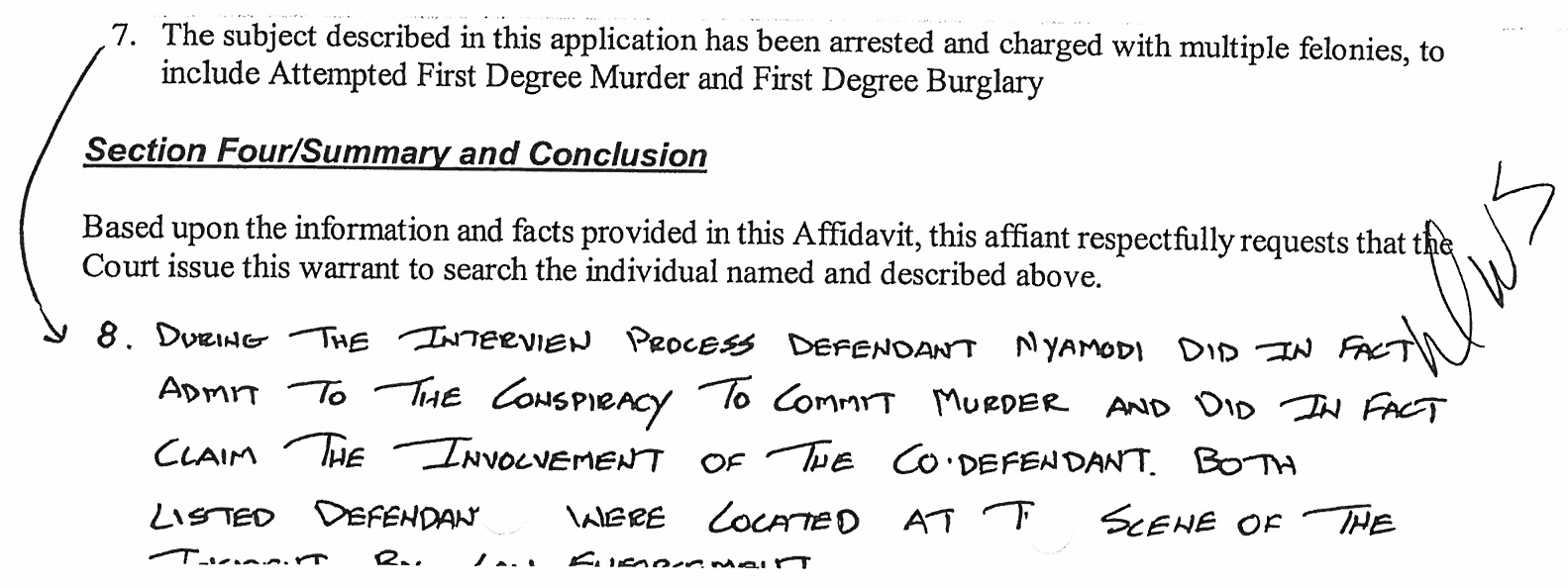
The suspicious handwritten addendum to Capt. Mitchell’s Search Warrant Application authorized by Judge Donald W. Stephens, with Stephens’ allege initials altering the document.
See Capt. Mitchell’s (full Warrant Application above)
A closer look at the addendum reveals that the handwriting on the Search warrant document isn’t consistent with judge Stephens signature. It appears to be a close match, but clearly who ever initialed the document is a different author in comparison to Stephens’ signature.(Note: judge Stephens’ signature is in full cursive script, while the initials appear to be composed with cursive and manuscript.) Compare the initials in the addendum above to the judge’s actual signature below, taking notice of the manner in which both letters S, and D are written.

Judge Stephens’ actual signature.
These findings are completely disturbing especially when we ponder why a Superior Court judge would alter an official court document, which could be construed as unethical on their part. Even if it was communicated to the judge by Capt. Mitchell or any other police official that Shannon Nyamodi had in fact confessed to the crime, how is it possible that police authorities were able to omit such compelling evidence in the Search Warrant Application requiring the addendum in the first place, related to such a serious violent crime? It can easily be established if the judge actually did input the handwritten addendum and if it is determined not to be an authentic alteration by him, it establishes that the document was altered by some official within the Franklin County Clerk’s Office who had access to the case file, and was done so after the document had been created and signed by the judge.
Moreover, since Ms. Elizabeth Crudup has continuously stated that her son has never as a matter fact, confessed to shooting Rhonda MacClean in the face nor robbing her on the night of the crime, only heightens suspicion as to why a County Clerk official with access to the case file would alter an official document indicating that the youth did in fact confess to the crime. All of these strange circumstances pertaining to official documentation in the case file, coupled with the state’s attorney prosecuting the crime strange motion to have the case taken off the court’s Management Docket System indefinitely is simply very troubling at the very least.
TPC has also discovered that the Franklin County Deputy who is listed as the complainant on Shannon Nyamodi’s arrest warrant and his indictment is actually a sheriff deputy assigned to a district in Bunn, North Carolina. It’s certainly not uncharacteristic for law enforcement officials from other jurisdictions to take part in a criminal investigation outside of their assigned area, but Deputy Ralph D. Almkuist’s request for Shannon’s arrest is highly suspect considering no incident reports related to this particular crime is available suggesting his involvement in the investigative process in this case. Deputy Almkuist even expressed doubt regarding Shannon’s guilt when he spoke to Ms. Crudup the day Shannon’s case was being indicted at the Superior Court House. Almkuist was pulled away from his discussion with Shannon’s mother, and after he came back out of the Sheriff’s office, he abruptly told Ms. Crudup that he couldn’t speak to her again.
Furthermore, documents in the case are void of any reports mentioning investigative findings by Almkuist, his participation in any way, nor any conclusions resolved by him to justify arresting Shannon Nyamodi for this crime. Captain Mitchell’s (Commander) Application outlining “Facts to Support Issuance of a Warrant” only indicated Deputy A. Barret as the affiant who contributed investigative data to Command regarding details obtained by The Franklin County Sheriff’s Department from the scene of this crime. Typically, police who actively work crime scenes act as a complainant in arrest warrants for suspects in a crime, because they have first hand knowledge regarding the particulars of the criminal investigation. Deputy Almkuist’s involvement in the arrest process gives the impression that he obtained the warrant under the direction of a superior, heightens suspicion when compiled with other very irregular elements of this case, and especially considering Almkuist’s assigned area is four towns away from Youngsville where the crime occurred. See a copy below of Shannon Nyamodi’s actual arrest warrant with Deputy Ralph D. Almkuist as the complainant seeking his arrest:
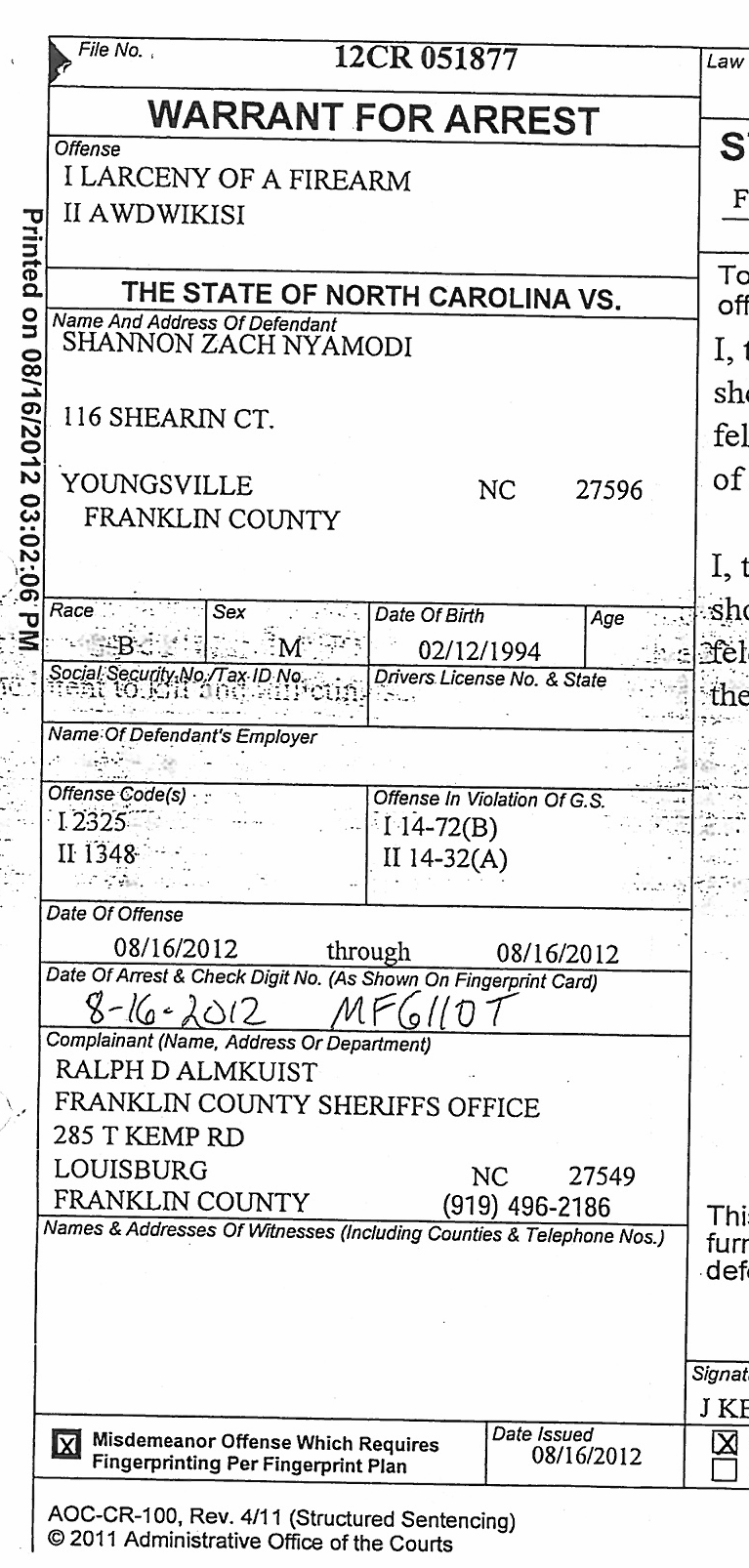
Deputy Raplh D. Almkuist’s arrest warrant complaint for Shannon Nyamodi. Deputy Almkuist is assigned to Bunn, North Carolina four towns away from where the crime actually occurred.
Shannon Nyamodi Search and Arrest Warrant PDF
The fact that a sheriff deputy from another jurisdiction so far away actually sought an arrest warrant for Shannon Nyamodi in this case, it leaves the door of suspicion wide open for followers of this story to doubt whether Deputies involved in the actual investigation (like Deputy A. Barrett), and those assigned to the Youngsville area are convinced of the youth’s guilt. Any police official may present an arrest warrant before the courts to have a suspect brought into custody, but when they do so, they are compelled to sworn testimony just like a normal citizen in a court of law. I can’t see how Almkuist could do so when he didn’t actively participate in an active investigation. This leans toward further suspicion that he did so as a direct order. Obviously Capt. Mitchell didn’t direct him, although he out ranks deputy Almkuist, but he isn’t his commanding officer. Clearly someone within management outside uniformed area commands with authority to pull personnel from so far away gave the direction for Almkuist to obtain the warrant.
I further support this argument by highlighting a known fact that police personnel are often consumed with paper work related to cases they be involved in, and even if supervision request personnel to obtain warrants as a favor due to someone’s inability to do so, the request are usually met with opposition. Police named as complainants in arrest warrants must appear before the courts related to any arrest. Most responsible officers would never do so without knowledge of the particulars of a case, and this is why I believe Almkuist was more than likely directed to obtain the warrant without being actively involved in the investigation. I believe his direction probably came from the Sheriff’s office itself.
To Be Continued ..
The People’s Champion
I’m David Adams
A Self proclaimed geek, Sympathizer for the homeless, Social Change Advocate, Crime Blogger, Promoter of Awareness for Missing and Exploited Children, and a mobile technology enthusiast. A recognized Journalist and Human Interest Writer championing the plight of the masses whom are without a voice of their own.
More Posts - Website
Follow Me:




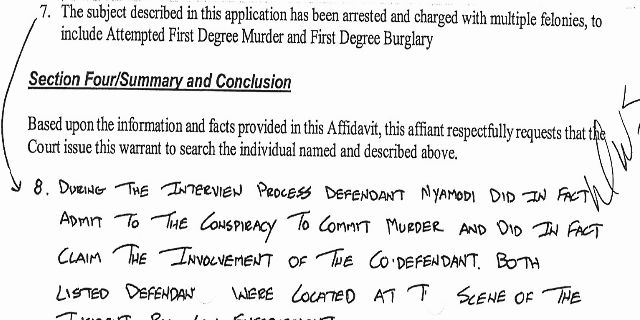
As the disturbing case of Shannon Nyamodi begins to garner national attention, for many around the country and within the Franklin County community where the shooting incident occurred, the story is a hard sell for most to come to grips with the youth’s possible innocence related to the crime. A story where a woman’s own daughter hired a young black man to kill and rob her is simply a gut wrenching, callous, and such a cowardice act of betrayal that no parent should ever have to endure. The epidemic of violent crimes around the nation constantly played out through media coverage of stories like this, has a tranquilizing effect on an American public frustrated with the seemingly endless violent culture on the streets of our country.
Despite shocking news coverage highlighting heinous crimes of this nature, there have been crimes broadcast on national media that didn’t quite pan out the way media outlets and their producers had anticipated the stories to develop. The story of Shannon Nyamodi’s involvement in this crime perhaps may be a textbook example of a crime in the news which had the bottom fall right out of it as more details related to the case became public. When news stories of violent crimes spark the public’s interest, especially within the confines of small, close knit, and prideful towns like Youngsville, North Carolina where it’s citizens express complete outrage regarding such despicable behavior, news stories related to such crime are initially often times accepted as being credible.
The rarity of criminal behavior within rural southern American towns may be the cause for less scrutiny of media reports in comparison to news reports in big city America, but these towns shouldn’t be immune from the implementation of objectivity and fairness regarding cases like this. Crime is so prevalent in more urbanized settings around the country and in many of these cities, a watchful public is typically more suspicious by nature of an allege criminal’s guilt, and usually reserves judgement on a case, and not allowing the media to cause it to resolve on convicting a subject prior to a trial playing out in a court of law. Also, in places like North Carolina where some say towns are given a bad rap, labeling communities as being racist when crimes involving African Americans appear to be handled unfairly in the state’s penal system, and the stigmatization of it’s historical allegiance to the confederacy dating back to the Civil War may be the reason outraged has developed over the state’s handling of this case.
As I have recently discovered while interacting with citizens from Franklin County North Carolina in the Franklin County News Online Group on Facebook, there appears to be a large contingency of people who are convinced of Shannon Nymodi’s guilt related to criminal charges accusing him of shooting Rhonda MacClean in the face one fall night back in August of 2012. I’m not sure if many of those who I interacted with were friends, family, or acquaintances of the victim in this case, but their stringent opposition to the mere thought of Shannon’s innocence clearly spurned agitation from many within the social media thread. Many recited news reports from print and televised coverage of the case as their premise for determining the young man’s guilt, but what do they really know about this case? While I was accused of making racist statements and labeled a race baiter, clearly those comments came from perspectives unfamiliar with my reputation of being completely outspoken and one of the harshest critics of black on black violence within the African American community, and especially woman of color (the TPC Blog has a plethora of coverage related to these topics).
In the Shannon Nyamodi case I have presented documentation supporting my arguments pointing to what I believe was a conspiracy to convict an innocent man, but when people from Franklin County go on the defensive regarding a story like this without presenting facts to support their position, it creates serious concern that they are in fact coming from a prejudice poster, and fueling the suspicion of racism that many feel is indigenous to the culture of the state of North Carolina. I could sense while interacting in the FCNO social media thread that some prideful North Carolinians were disturbed by sweeping generalizations which label all white people in the community as racist. However, I believe the best way for these communities to combat such characterizations is to allow these kinds of cases to met themselves out in a Court of law while remaining objective and viewing all elements of the case with a common sense approach. Some of the Franklin County citizens inquired as to how I would feel if the shoe were on the other foot, and I’ll go on the record to say if Shannon Nyamodi did in fact shoot this woman and robbed her, then he belongs behind bars for a long time. I don’t believe that evidence exist to reach such a conclusion in this case, which I’ll outline further in this article.
The Frame Up
Fifteen months after she was shot in the face and robbed within her own home, Rhonda MacClean has come forward and publicly stated that Shannon Nyamodi was in fact the assailant who attacked her the night of August 6, 2012. It’s unclear after all this time, and without making statements to any media outlet since the crime occurred, why she has chosen a social media platform to vent her perspective on the case. More importantly, it should be noted that her recent statements contradict what police officials who were primary to the shooting scene that night, have documented in their reports related to the case. MacClean described to TPC in horrific detail the events of the night she was shot in the face, but her story doesn’t match what she told Franklin County Sheriff Deputy Barrett, nor Youngsville police Lt. M. Little. In fact statements she allegedly made to both officers contrasted, and it’s surprising that no mention was ever made of it from either police agency. In short MacClean told deputy Barrett that some unknown subject hit her in the head as she left her bedroom to check on her residence. MacClean told Lt. Little that she “heard the front door to her home open and went downstairs to see who and when she got downstairs she saw a man and she asked her daughter what was she doing and someone hit her in the head with the pole from behind her sliding door.”
Regardless of what anyone says about the case, these are the facts as reported by police officers who were at the scene that night. She describes being hit in the head and never mentioned anything about being shot by anyone (although police say they don’t believe MacClean realized that she had actually been shot,and probably mistakenly thought that she was struck with a pole). The odd part is that she described being hit in the head upstairs to Barrett and then downstairs to Lt. Little. Why isn’t it clear to her where she was attacked? Why wasn’t it clear to her that she had been shot? At some point she would have had to have remembered hearing the gun blast. I am wondering if the Complainant who filed for the arrest warrant for Shannon Nyamodi is aware of these contrasting statements that MacClean gave to police officers from different agencies? Take a look at snap shots from the reports and the contrasting statements below:

Snapshot from Deputy Barrett’s reports showing MacClean’s statement.

Snapshot from Lt. M. Little’s report highlighting MacClean’s statement.
Barrett’s Report PDF (Second Search Warrant Application at bottom of page 2)
Lt. M. Little Report PDF (Second report)
Now that we have established as a matter of fact that MacClean more than likely didn’t identify Shannon as the person who shot her that night,while communicating to police based on their initial reports that the assailant was some unknown person, and her statements to TPC describing having told police “there he is right there” becomes highly suspicious. For followers of this case to believe her now would mean that officers from the Franklin County Sheriff Department and the Youngsville Police were all incompetent, didn’t get it right, and failed to include such crucial information into police reports and properly comprehend that she had fingered the perpetrator at the scene. It’s apparent that Nyamodi wasn’t identified as the shooter because he wasn’t immediately taken into custody, and an arrest warrant being obtain for him later on. Shannon was questioned at the scene and initially let go.
More disturbingly, when we digest all variations of MacClean’s account of that night (detailed in previous TPC articles) it’s revealed that she is actually saying there were three men invading the home at the time of the crime. The man who struck her in the head upstairs when she came out of her bedroom, the man who struck her in the head from behind the sliding door when she got downstairs (or Allegedly Shannon Nyamodi who the allege victim told TPC suddenly emerged from a bathroom, and shot her in the face “at point blank range”), and the man (allegedly Mike Young) who she says accosted her 13 year old handicapped daughter with a screwdriver while all of these events played out in the home. Quite Frankly, the math isn’t hard to do here. A thorough investigator would have obtained all available data submitted in the case, including reports from personnel from other agencies who conducted field interviews with the victim and possible witnesses. This would have allowed lead investigators a complete look at how the crime possibly occurred.
It’s simply unimaginable that investigators would have accomplished this, had time to thoroughly examine data, and do so prior to obtaining an arrest warrant for Shannon Nyamodi by 3:10 p.m. which was the time of his arrest that day. Had investigators looked at all of the reports closely, they would have discovered the inconsistencies in the victims statements, and conducted a more thorough investigation to determine a clear picture of what she said occurred. The youth’s arrest within a twelve hour time frame when it was completely impossible to link him to the crime through any forensics evidence obtained from the crime scene such as DNA or fingerprints (Although the arrest, and search warrant for Nyamodi was obtained just hours after the crime, the warrant’s inclusion seeking DNA samples from the suspect couldn’t be obtained until he was actually in custody. How they linked him to any DNA before hand is confusing, and fingerprints potentially obtained from the crime scene couldn’t have linked him either, because he had never been printed before prior to his arrest for this crime.), continues to be problematic for authorities to establish compelling justification for charging Shannon in such a short time frame. To further compound these rather peculiar elements of this case, Deputy Barrett whose agency ultimately filed criminal charges against Shannon Nyamodi, indicated in his report that the “suspected shooter was no longer at the scene” upon police arrival, while he was securing the area of the crime.
We know this to be fact because Capt. William L. Mitchell, Barrett’s supervisor, included this information in his “Facts to Support Issuance of a Warrant” on the Franklin County’s Search Warrant application submitted before Superior Court Judge Hight. These statements in the officer’s report alone are the most compelling indication that MaClean never identified Shannon Nyamodi as her shooter to police officers who interviewed her that night. This crucial information as outlined in official police documents related to this crime would also establish as a matter of fact, that even the Franklin County Sheriff’s Commander was under the impression that the assailant who shot Rhonda MacClean in the face was unknown to police when authorities sought a warrant to search the home where the crime occured, to obtain potential trace evidence in the crime. View snapshots of Capt. Mitchell’s Search Warrant Application highlighting “Facts to Support Issuance of a Warrant” indicating that the ‘suspected shooter was no longer at the crime scene” below:

Snapshot of Capt. William L. Mitchell’s Search Warrant Application indicating police officials believed that the suspect shooter was unknown to police at the time the document was submitted to Superior Court.
Capt. Mitchell’s Search Warrant Application (Page 2, item #3, of second Warrant Application)
The above contained information in this article should raise sufficient suspicion as to how the Franklin County Sheriff’s Office not only arrested Shannon Nyamodi during such early stages of their investigation into the shooting, but why he was even charged with the crime in the first place. Perhaps the apparent and suspicious alteration of Capt. Mitchell’s Search Warrant application, authorized by Superior Court Judge Donald W. Stephens may spell a starting point where the confusion and potential conspiracy to convict an innocent man began. The document contains a handwritten addendum with the judge’s allege initials indicating his input of an 8th probable cause for a search warrant. It’s unethical for a judge issuing a warrant requested by a police agency to assist in the composition of such a crucial document. The altered document with such compelling content is not only highly suspect, but why on earth would the judge add such content, when it was Capt. Mitchell seeking the warrant. Judge Stephens wouldn’t have knowledge of Shannon’s alleged confession, he more than likely wasn’t there at the time (to do so would be totally inappropriate and unethical), and clearly the person who wrote Judge Stephens’ initials was completely ignorant to the fact that the initials should actually have been Capt. Mitchell’s (the person submitting the Warrant Application).
Though some documents often have such notation included, documents created for legal or criminal purposes that are used as evidence in a court of law, almost never have handwritten adjustments because it gives the impression of impropriety related to a document’s authenticity, and such altered input on any document typically includes the date in which the alteration transpired. The Search Warrant document to search the residence where the shooting actually occurred and authorized by judge Stephens is void of any indicators establishing when it was altered. View the altered official document below, taking notice of the handwritten initials on the far right in cursive script.

The suspicious handwritten addendum to Capt. Mitchell’s Search Warrant Application authorized by Judge Donald W. Stephens, with Stephens’ allege initials altering the document.
See Capt. Mitchell’s (full Warrant Application above)
A closer look at the addendum reveals that the handwriting on the Search warrant document isn’t consistent with judge Stephens signature. It appears to be a close match, but clearly who ever initialed the document is a different author in comparison to Stephens’ signature.(Note: judge Stephens’ signature is in full cursive script, while the initials appear to be composed with cursive and manuscript.) Compare the initials in the addendum above to the judge’s actual signature below, taking notice of the manner in which both letters S, and D are written.

Judge Stephens’ actual signature.
These findings are completely disturbing especially when we ponder why a Superior Court judge would alter an official court document, which could be construed as unethical on their part. Even if it was communicated to the judge by Capt. Mitchell or any other police official that Shannon Nyamodi had in fact confessed to the crime, how is it possible that police authorities were able to omit such compelling evidence in the Search Warrant Application requiring the addendum in the first place, related to such a serious violent crime? It can easily be established if the judge actually did input the handwritten addendum and if it is determined not to be an authentic alteration by him, it establishes that the document was altered by some official within the Franklin County Clerk’s Office who had access to the case file, and was done so after the document had been created and signed by the judge.
Moreover, since Ms. Elizabeth Crudup has continuously stated that her son has never as a matter fact, confessed to shooting Rhonda MacClean in the face nor robbing her on the night of the crime, only heightens suspicion as to why a County Clerk official with access to the case file would alter an official document indicating that the youth did in fact confess to the crime. All of these strange circumstances pertaining to official documentation in the case file, coupled with the state’s attorney prosecuting the crime strange motion to have the case taken off the court’s Management Docket System indefinitely is simply very troubling at the very least.
TPC has also discovered that the Franklin County Deputy who is listed as the complainant on Shannon Nyamodi’s arrest warrant and his indictment is actually a sheriff deputy assigned to a district in Bunn, North Carolina. It’s certainly not uncharacteristic for law enforcement officials from other jurisdictions to take part in a criminal investigation outside of their assigned area, but Deputy Ralph D. Almkuist’s request for Shannon’s arrest is highly suspect considering no incident reports related to this particular crime is available suggesting his involvement in the investigative process in this case. Deputy Almkuist even expressed doubt regarding Shannon’s guilt when he spoke to Ms. Crudup the day Shannon’s case was being indicted at the Superior Court House. Almkuist was pulled away from his discussion with Shannon’s mother, and after he came back out of the Sheriff’s office, he abruptly told Ms. Crudup that he couldn’t speak to her again.
Furthermore, documents in the case are void of any reports mentioning investigative findings by Almkuist, his participation in any way, nor any conclusions resolved by him to justify arresting Shannon Nyamodi for this crime. Captain Mitchell’s (Commander) Application outlining “Facts to Support Issuance of a Warrant” only indicated Deputy A. Barret as the affiant who contributed investigative data to Command regarding details obtained by The Franklin County Sheriff’s Department from the scene of this crime. Typically, police who actively work crime scenes act as a complainant in arrest warrants for suspects in a crime, because they have first hand knowledge regarding the particulars of the criminal investigation. Deputy Almkuist’s involvement in the arrest process gives the impression that he obtained the warrant under the direction of a superior, heightens suspicion when compiled with other very irregular elements of this case, and especially considering Almkuist’s assigned area is four towns away from Youngsville where the crime occurred. See a copy below of Shannon Nyamodi’s actual arrest warrant with Deputy Ralph D. Almkuist as the complainant seeking his arrest:

Deputy Raplh D. Almkuist’s arrest warrant complaint for Shannon Nyamodi. Deputy Almkuist is assigned to Bunn, North Carolina four towns away from where the crime actually occurred.
Shannon Nyamodi Search and Arrest Warrant PDF
The fact that a sheriff deputy from another jurisdiction so far away actually sought an arrest warrant for Shannon Nyamodi in this case, it leaves the door of suspicion wide open for followers of this story to doubt whether Deputies involved in the actual investigation (like Deputy A. Barrett), and those assigned to the Youngsville area are convinced of the youth’s guilt. Any police official may present an arrest warrant before the courts to have a suspect brought into custody, but when they do so, they are compelled to sworn testimony just like a normal citizen in a court of law. I can’t see how Almkuist could do so when he didn’t actively participate in an active investigation. This leans toward further suspicion that he did so as a direct order. Obviously Capt. Mitchell didn’t direct him, although he out ranks deputy Almkuist, but he isn’t his commanding officer. Clearly someone within management outside uniformed area commands with authority to pull personnel from so far away gave the direction for Almkuist to obtain the warrant.
I further support this argument by highlighting a known fact that police personnel are often consumed with paper work related to cases they be involved in, and even if supervision request personnel to obtain warrants as a favor due to someone’s inability to do so, the request are usually met with opposition. Police named as complainants in arrest warrants must appear before the courts related to any arrest. Most responsible officers would never do so without knowledge of the particulars of a case, and this is why I believe Almkuist was more than likely directed to obtain the warrant without being actively involved in the investigation. I believe his direction probably came from the Sheriff’s office itself.
To Be Continued ..
The People’s Champion
I’m David Adams
A Self proclaimed geek, Sympathizer for the homeless, Social Change Advocate, Crime Blogger, Promoter of Awareness for Missing and Exploited Children, and a mobile technology enthusiast. A recognized Journalist and Human Interest Writer championing the plight of the masses whom are without a voice of their own.
More Posts - Website
Follow Me:




You can
leave a response, or
trackback from your own site.




 RSS Feed
RSS Feed Twitter
Twitter







 Posted in
Posted in 


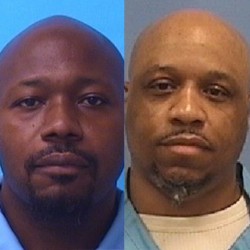



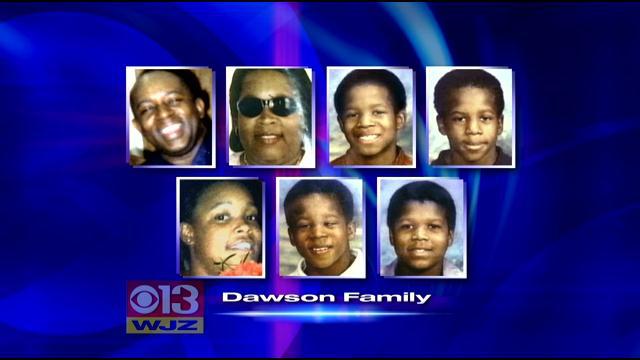
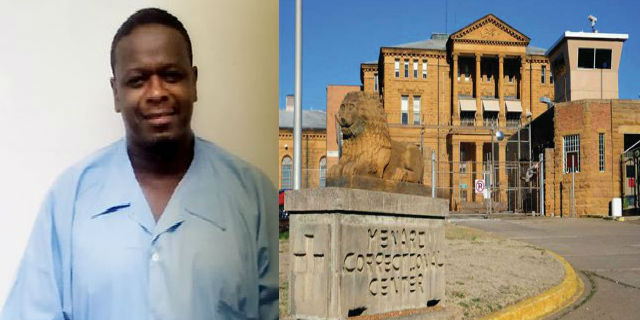




Yuk Perng
I found a great…
Kenyetta Crannell
I found a great…
Don’t wear seat belts lest you drown in you own urine?